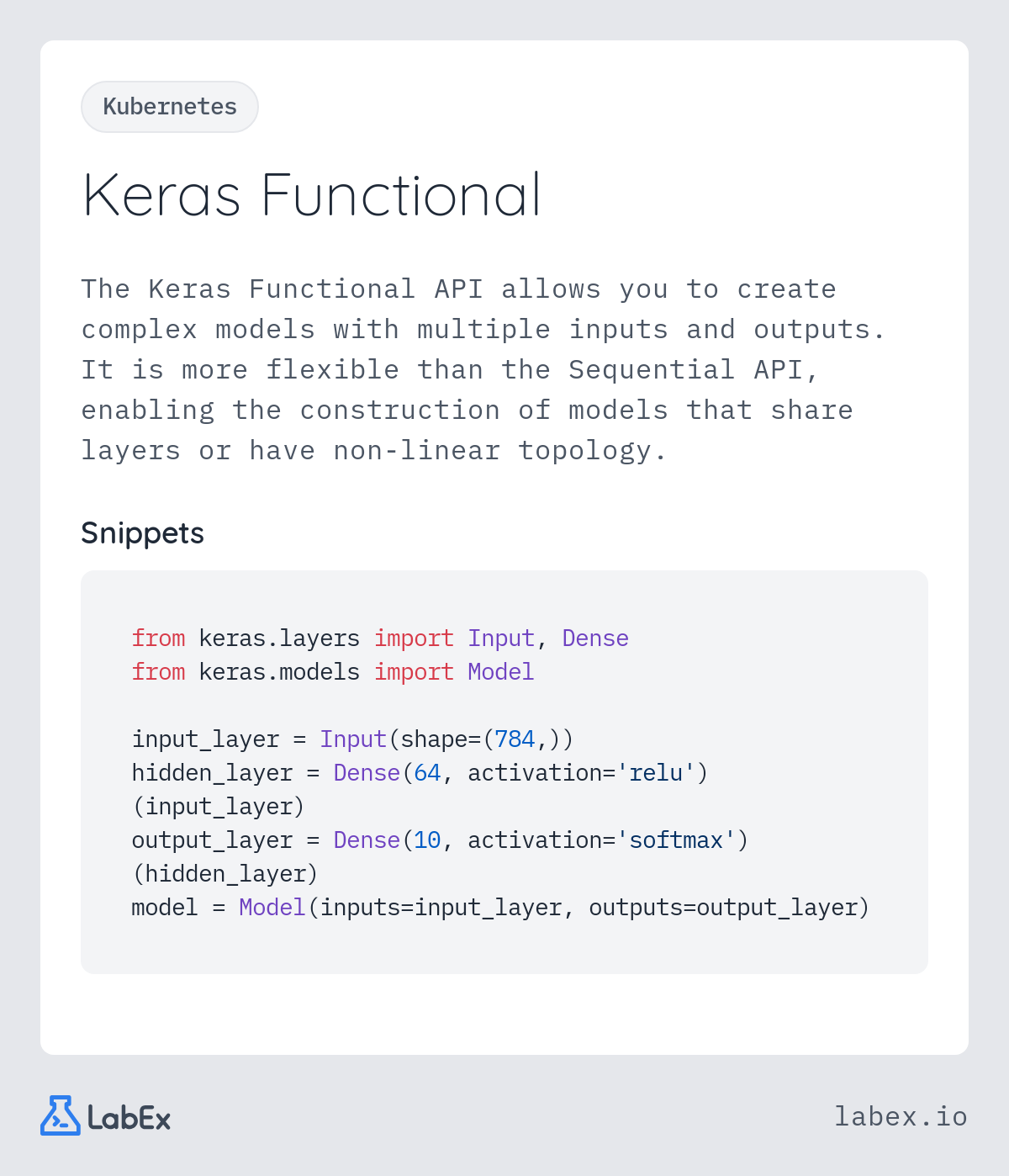
Keras Functional
The Keras Functional API allows you to create complex models with multiple inputs and outputs. It is more flexible than the Sequential API, enabling the construction of models that share layers or have non-linear topology.
Explore our curated collection of programming flashcards. Each card contains practical examples and code snippets to help you master programming concepts quickly.